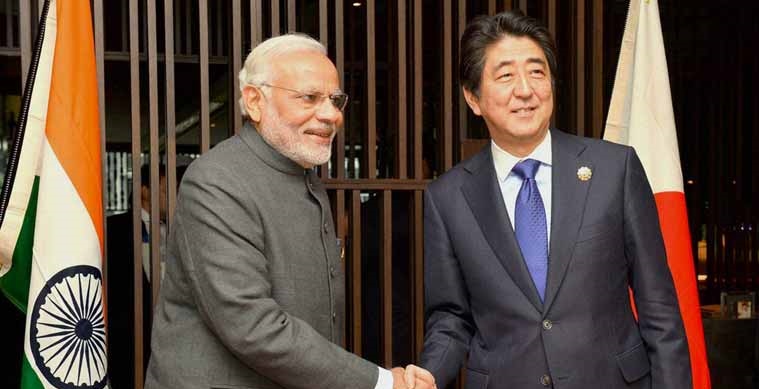India’s bullet train
September 13, 2017 | Expert Insights

Japanese Prime Minister Shinzo Abe will be in India to lay the foundation stone of the 508-km long Mumbai-Ahmadabad High Speed Rail (MAHSR).
It will be the first India’s first high speed rail line.
Background
Japan’s foreign direct investment in India has risen since the global financial crisis, reaching nearly $3.5 billion in 2016. Japan is India’s 10th largest trading partner with the bilateral relationship worth about $14.5 billion.
Japan has the technological know-how and several large corporations looking to access new markets. For the Japanese with a shrinking population at home, India offers a large market for its high quality products.
India and Japan traditionally have strong ties with one another. The two nations have become closer in the recent years in order to counter the rise of China.
Analysis
Shinzo Abe, the Prime Minister of Japan will be in India on September 13th, 2017. He will be holding bilateral talks in the state of Gujarat, the home state of Indian Prime Minister, Narendra Modi. He is the second head of a state, after Chinese President Xi Jinping, who has chosen to make Gujarat the base for such dialogue. He will be attending the 12th India-Japan annual summit in Ahmedabad, Gujarat.
A state government official was quoted in Indian Express stating, “Abe is visiting Gujarat at a time when the current Japanese investments in the state are close to one billion US dollars. This is expected to reach USD three billion by 2020.”
On September 14th 2017, Modi and Abe will be laying the foundation stone of the 508-km long Mumbai-Ahmadabad High Speed Rail (MAHSR). It will be the first India’s first high speed rail line.
Railways minister Piyush Goyal said at a press conference, “The project will integrate the Indian Railways to the global transportation technology and will help rewrite India’s transport infrastructure narrative. Unfortunately, Indian railways have not graduated from the colonial-era technologies and practices in past four or five decades. Exposure to the high speed technology (popularly called the bullet trains) will enable rail engineers in India to innovate and modernize systems and practices.”
In 2013, India and Japan signed an MoU to undertake a feasibility study of the Mumbai-Ahmadabad route. According to experts, the project is estimated to cost ₹1.08 lakh crore (US$17 billion). Japan International Cooperation Agency (JICA) will be funding 81% of the costs. It is a 50 year long with a 0.1% interest.
Goyal spoke about the project noting, “This technology will revolutionize and transform the transport sector of India. This is an occasion to celebrate the advent of the most modern technology in India. It shall also benefit the farmers for transportation of agricultural produce in a fast mode.”
Assessment
Our assessment is that the bullet train will significantly reduce the traveling time between Ahmedabad and Mumbai, the two largest business hubs in India. The bullet train would bring technological advancement to India. However, the question remains on the prioritization. The recent months have witnessed an increased number of rail accidents taking place in India due to derailments. Some have opined that rather than spending money on bringing bullet trains to the nation, the money should be funneled to make the current railway infrastructure safer.








Comments